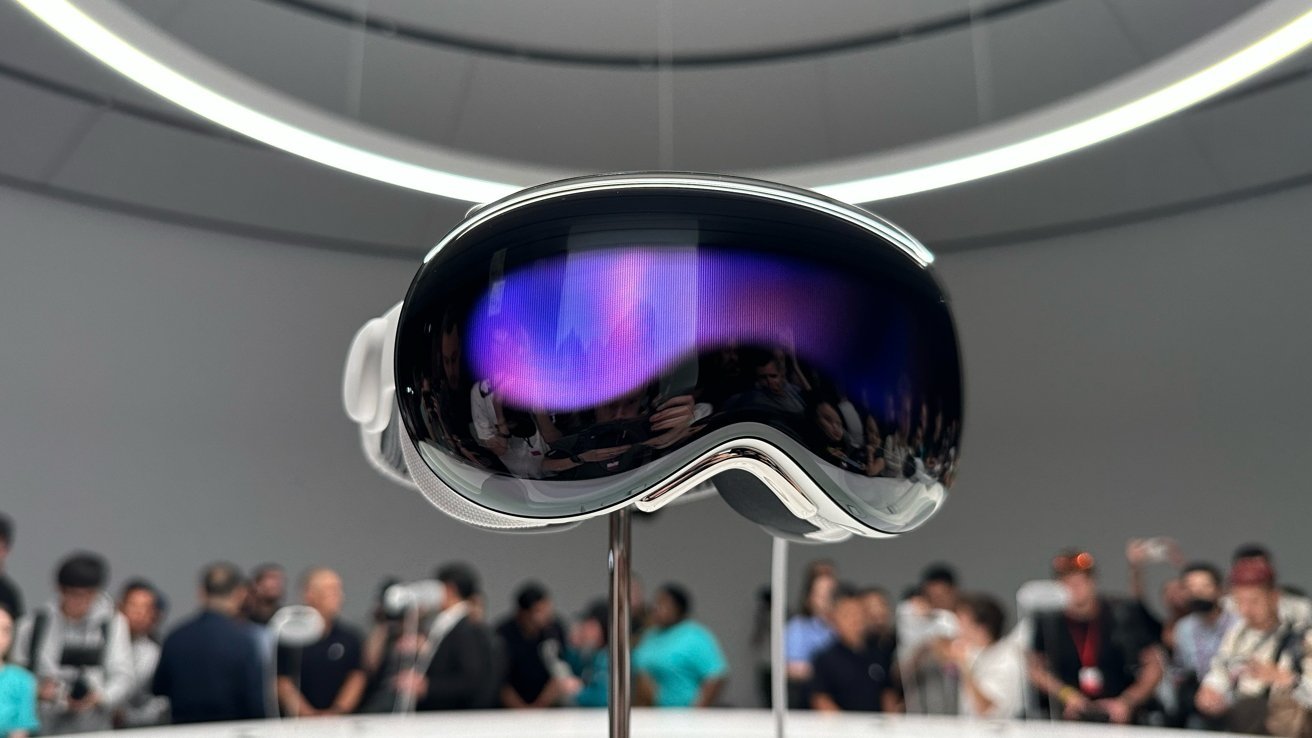Apple may use Vision Pro for mental health diagnosis and treatment
A new report claims that internally, Apple is discussing how Apple Vision Pro could detect signs of mental health issues, and perhaps also help treat them.

Apple Vision Pro
Apple has already been said to have more plans for Vision Pro use cases than it has announced, and there have been health possibilities, such as surgeons seeing vital data during operations. Plus a very great many of the company's patents to do with Vision Pro have it using sensors to gauge a wearer's stress levels.
According to The Information, Apple employees have also been working on a much more specific use of the technology to help with mental health. Citing unnamed sources said to have direct knowledge of the discussions, the publication says that Vision Pro could measure a wearer's facial expressions to detect depression, anxiety, or more.
Then, according to one of the sources, the headset could display images and play back audio that could improve the wearer's emotions.
Reportedly, Apple staff including Mike Rockwell, leader of Apple's Vision Products Group, have spent considerable time on the idea. They are also said to have hired health experts explicitly to explore such possible functions.
Apple did not comment on the article. However, The Information says that many people who worked on Vision Pro over the last few years say that they had been extensively exploring such mental health ideas.
In each case, the core concept is to use Vision Pro's cameras and eye-tracking features to measure what's called the wearer's affect. "Affect" is a psychology term covering feelings and moods that a person has, and which our bodies indicate.
The report is not clear where Apple stands with the research, or whether they are even some benefits that might come with later iterations of the Vision Pro.
Apple says that the Vision Pro will launch in early 2024. Most recently, it was reported that staff training with the product would begin in the first months of the year.
Read on AppleInsider

Comments
Any condition increase eye pressure, affects eye movement, changes the blood flow in the retina, etc, could be detected by OpticID and eye tracking performance.
It's early. They still need to answer the question of getting people to use it regularly.
The use of the Vision Pro for diagnosing mental health conditions is very interesting … but I don’t yet see how the device would be administered or used in practice for diagnostic use cases, especially when it comes to users/wearers who have no previous diagnosis of mental health conditions.
It’s not a CURE but it’s an incredibly helpful rehab tool. I went into it super skeptical but as I was doing it I had mild visual hallucinations and afterward it honestly felt like I was more myself than I had been in the previous 7 years.